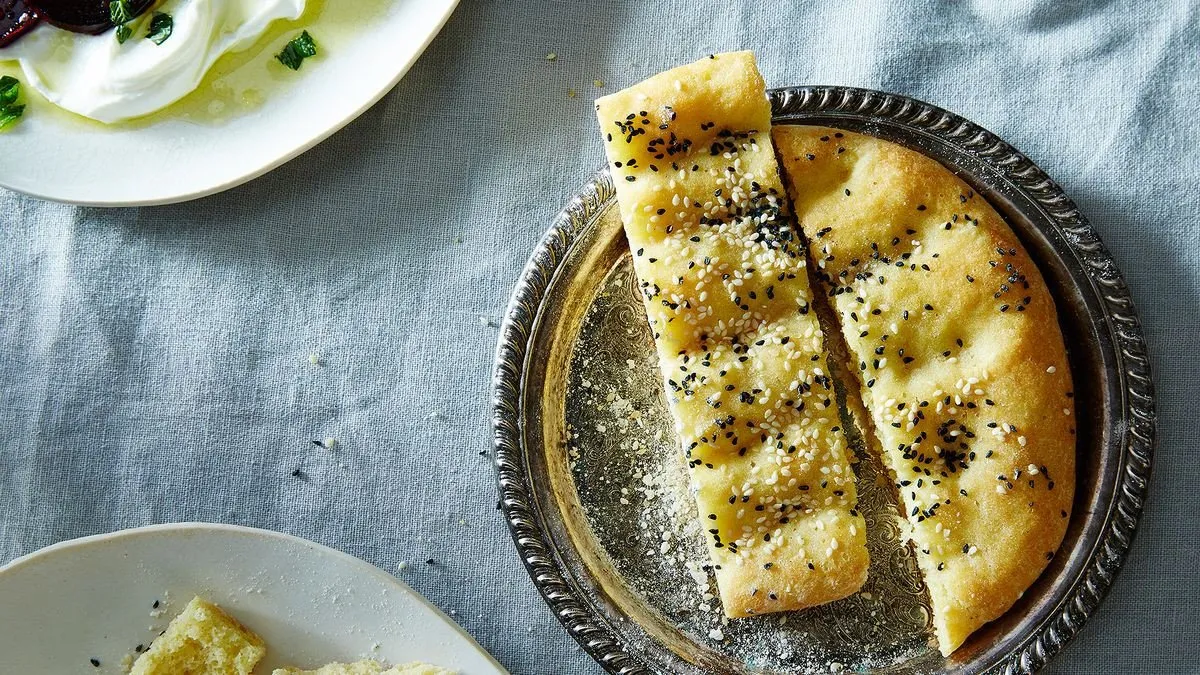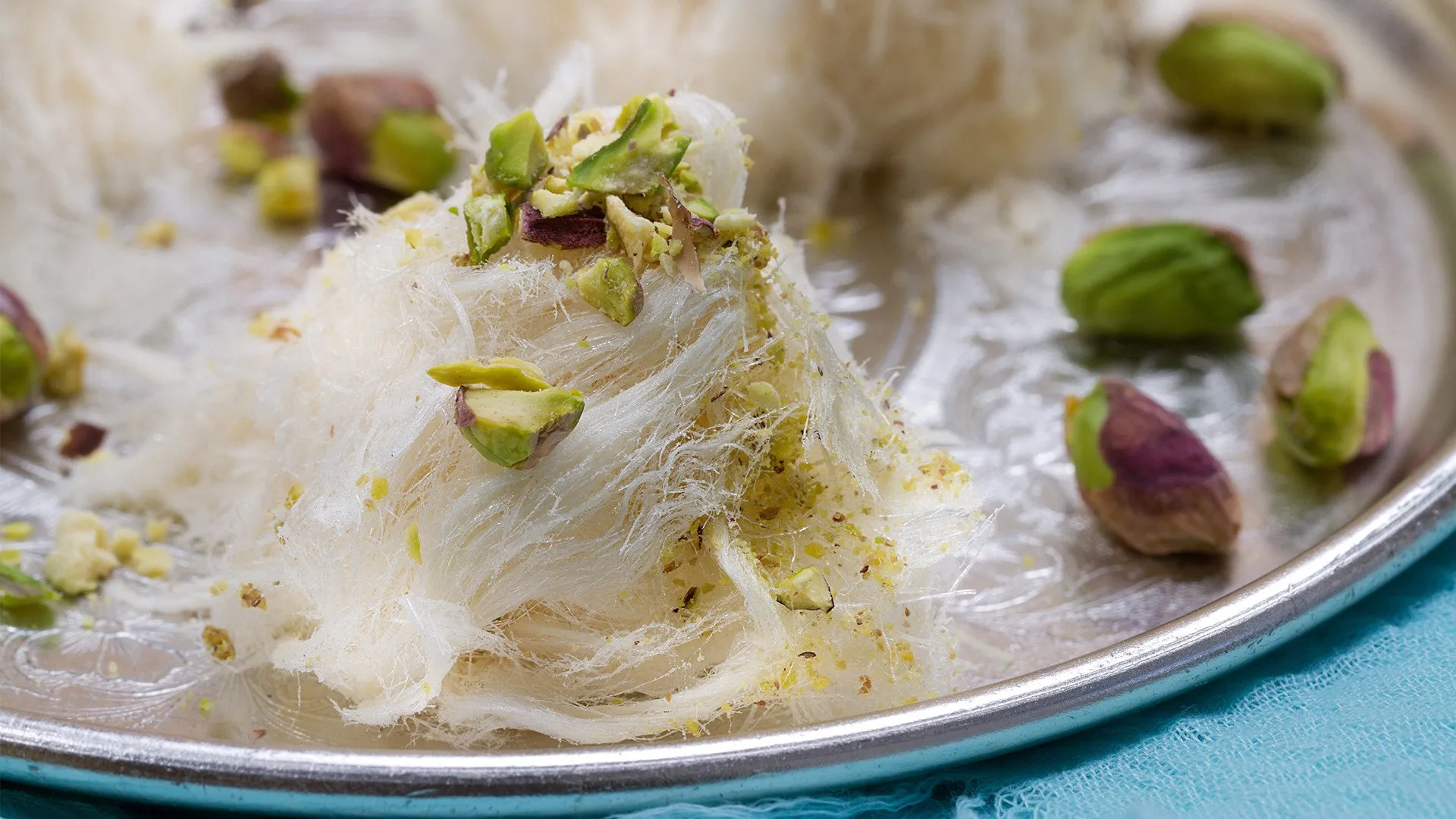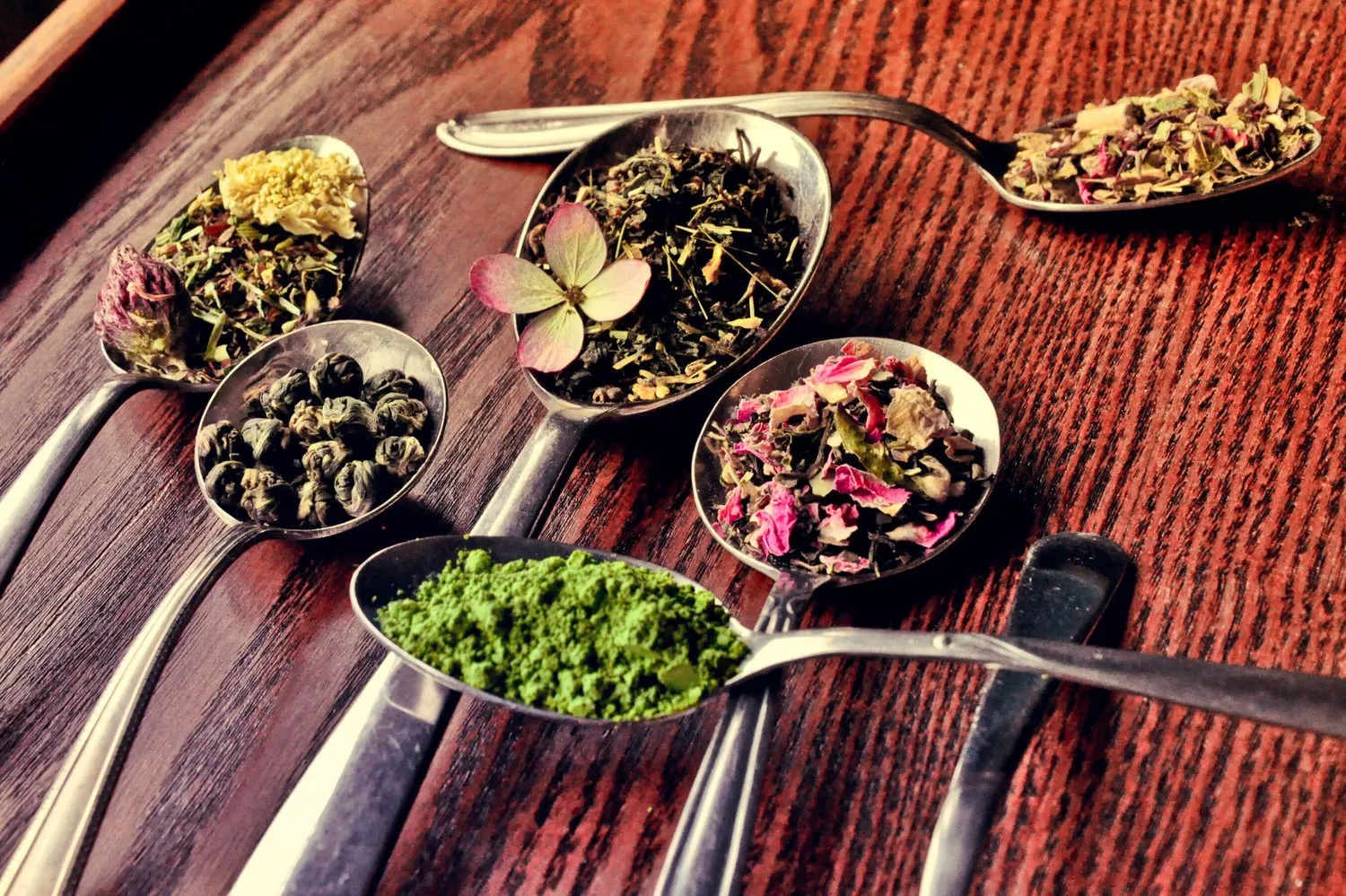If you pack your bag and travel to the south of the Caspian Sea, you would have the chance to walk or hitchhike the winding roads among the lush green leaves of tea. You would also get to smell fresh tea on roads such as the one that takes you to one of the most beautiful villages of Iran, Masouleh. Tea has become the nation’s beverage of choice since it was first introduced to this country. However, it’s something beyond national beverage to the loving and warm-hearted people of Iran; tea has embedded itself deep into the traditional culture of people in all corners of this grand country. Tea has become a crucial sign of hospitality in Iran, and it’s the first thing that an Iranian family will offer their guests. It’s what people drink when they are up to talk about serious matters of business at work. It’s the drink Iranian people love to have after their main meals; or finally, it’s only the soothing taste and aromatic smell of scalding tea that treats the difficulties and bitterness of a long day at work.
The History of Tea in Iran
How did tea first come to Iran? Well, through a long journey via Silk Road from China, its homeland, in the late 15th century. But, Iranian people could not cultivate tea until the late 19th century. Haj Mohammad Mirza Kashef Al-Saltaneh was a diplomat who traveled to India and learned about the suitable climate for growing tea plants.
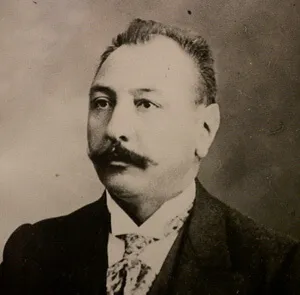
He smuggled tea saplings to Iran in spite of the strict policies of England against other countries regarding tea plantation and trade. Now you can guess who the father of Iranian tea is! Greenish plains and fields on the hillsides of Lahijan located in Gilan Province were the perfect places for tea plantation in Iran. As soon as the plantation spread all over Gilan and even further to Mazandaran province, tea replaced coffee eventually. And all around the country tea-houses became more crowded with people fond of drinking tea. The demand for tea has grown to the extent that the production in the country is not capable of meeting it; so, still, tea is imported from India, the Middle East, and Africa.
Tea culture in Iran
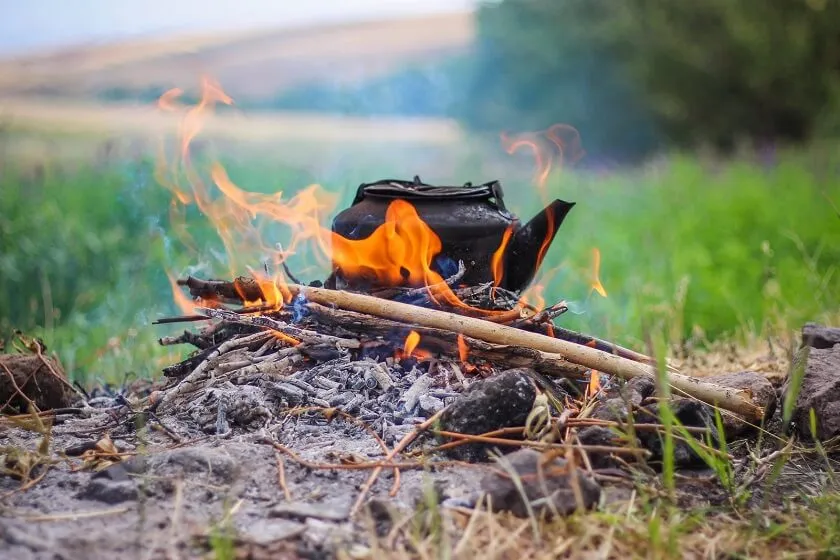
Although Iran is not from the significant producers of tea in the world, it is one of the tea-loving countries since tea has been woven into the fabric of culture in this country. In every single house, either in a very small village or in a big crowded city in Iran, you will get to hear the sound of steamed water rushing out a kettle or samovar that signifies the gently boiling water is waiting to be poured into the red-flowered China teapot over the fresh loose black tea leaves. Samovar is originally imported from Russia, and the word “samovar” means to cook itself. Tea culture in Iran and that of Russia and Turkey have a lot in common. However, there are specific features regarding tea culture that you won’t be able to find anywhere other than Iran. Tea is ready to be served in almost all the houses. Its aroma can be smelled everywhere from the stalls and stores in the streets to significant company boardrooms in Iran. It’s the first thing people offer their guests.
What Is The Iranian Tea Etiquette?
Iranians start the day with a freshly brewed cup of tea sweetened with one or two spoons of sugar served with their breakfast. They believe that the taste of sweet tea is in great harmony with bread and cheese. Iranians story of drinking tea is not limited to mornings with breakfast only; they drink tea at work, after their meals at home, or at night before sleep.
The color, temperature, strength, and taste of tea are very much influential in formal gatherings and when served for specific guests. In many houses, it’s a cultural etiquette to pour your tea back into the teapot after you pour it into a cup for the first time. People believe this action is needed to adjust the color evenly around the teapot or let it steep a bit longer if needed. Before taking the teacups to the guests, the host checks the tone, color, and strength of tea by a single glance behind the shining glass.
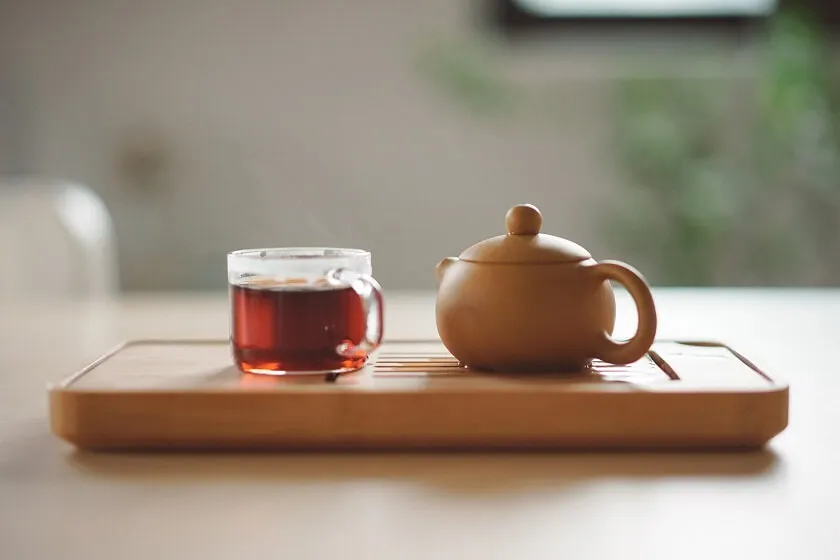
Traditionally, tea was served in thin, wasted glasses on a saucer in tea houses. This particular set has played a significant role in Persian people’s tea etiquette. Iranians love to have their tea while it’s scalding. Some of them use their deep saucers to take every single sip on the edge of being scalding. If not in a thin-wasted glass, people serve tea in tea cups, but never in a mug.
To brew fresh loose-tea, Iranians either use the method of putting the teapot on a kettle or a samovar. However, one of the popular ways of brewing tea, mainly when people spend their holidays in the hands of dear Mother Nature, is to brew it over the coals or use a charcoal samovar when you’re at home. It grants a pleasant smoky taste to your tea that soothes the nerves.
Tea Flavors in Iran
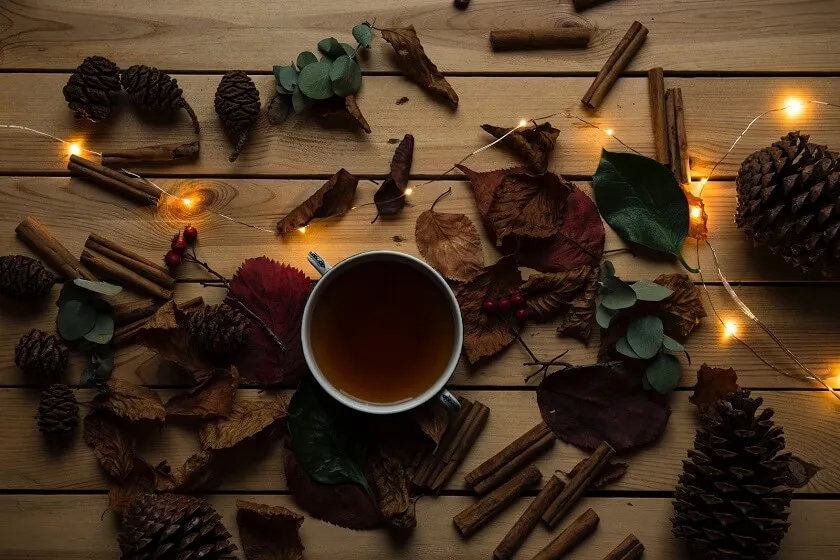
Do you like to know what flavors Iranians add to their black tea? Some people choose to drink their tea with no sweeteners, and they try adding subtle flavors instead. Now, if you’re up to taste Iranians favorite flavors, it can be difficult for you to choose only one. Try as many flavors as you can!
The taste of black tea combined with a cardamom pod, a cinnamon stick, a few damask rose petals, or a saffron thread is among the most popular favors in Iran. You can’t smell the fresh scent of bitter orange blossoms in Shiraz and do not have a craving for a cup of tea flavored with dried bitter orange flowers.
Interested in trying out different Iranian dishes and beverages? Taste Iranian Hospitality in Their Foods and Drinks. Check out all of our Food and Culinary Tours here.
Sweetening Tea in Iran
Although some people like the bitterness behind the reddish-brown color of tea, many rather sweetening their tea. Do you like to know how Iranians would sweeten their cup of tea? Sugar is the most probable answer when talking about your cup of tea for breakfast time.
In the old days, people used to buy a sugar loaf or two and break them into small cubes themselves. The conventional way for Iranians to sweeten their tea is to take sugar cubes with their tea. If you choose to use sugar cubes, you’d have to know that it’s a rule of tea etiquette in Iran to put a sugar cube in your mouth and let it melt on your tongue while you take every single sip of your tea. Many elders are used to dipping their sugar cube in their cup of tea before putting it into their mouth. To sweeten your tea, you have a variety of choices, and you can drink it with saffron rock candies (Nabât), dates, dried mulberries, raisins, or other types of sweets.
Iranian Tea Houses and Customs
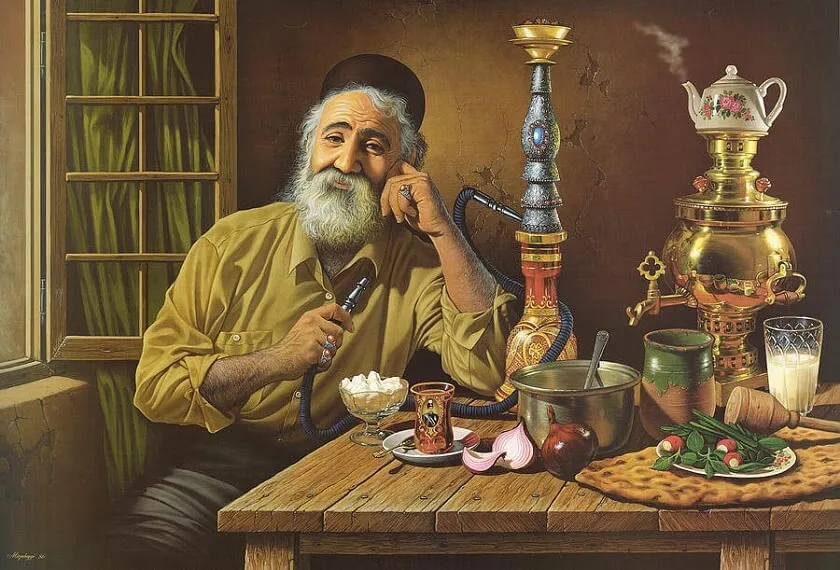
Do you have any idea what’s unique about tea houses in Iran? As tea became more popular in Iran, many tea houses appeared in the main streets, and people from different social classes with different ages rushed in them. People gather in tea houses and talk while they take multiple cups of tea. Tea-houses are traditionally designed in conventional form and architecture. In those ancient ones dating back to Qajar Era, walls are painted with the famous epic stories of Shahnameh since raconteurs used to retell the verses and stories of Shahnameh amusingly in the old times. Many tea houses are set in several Takhts instead of tables. Takht is a type of long bench covered with rugs and pillows for you to lay down on it easily. In tea houses of Iran, your teacup is going to be filled with tea as many times as you wish for. It is a traditional custom to turn your glass upside down to indicate that you want no more tea. Traditional tea-houses are popular among both foreign and local tourists.
When Do Iranians Drink Tea?
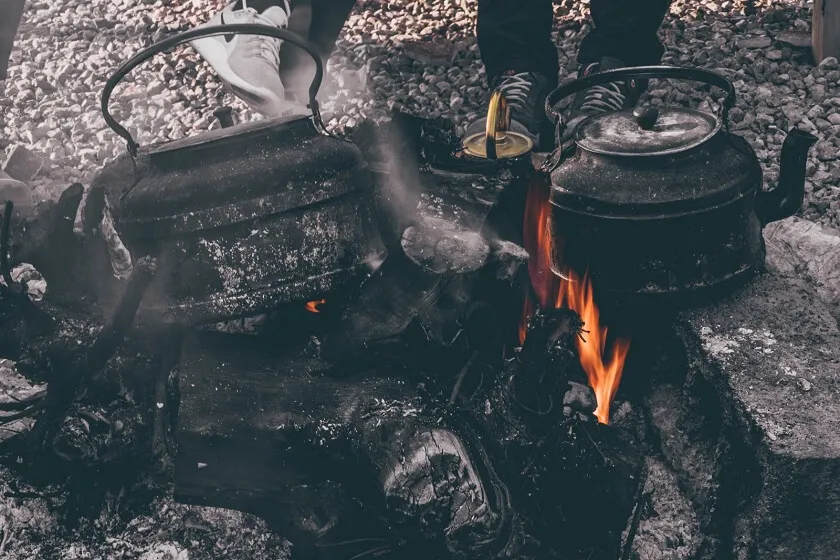
As mentioned before, Iranians drink their first cup of tea when they get up in the morning. And then, through the whole day, the samovar is on, and tea is ready to be served. In ceremonies, special occasions and parties, after meals, or while watching TV, tea is always there with Iranian people. Take a trip to northern Iran, and witness the lovely process of picking fresh tea leaves in the middle of spring. You can meet the hard-working people in these fields, and enjoy drinking fresh tea with them. Don’t forget to visit Iran National Tea Museum located on the Chai hill in Lahijan. The mausoleum of Haj Mohammad Mirza Kashef Al-Saltaneh, who is known as the father of tea in Iran is located at the center of this museum. Here, you would be able to see interesting documents regarding remarkable efforts of Kashef Al-Saltaneh, and different types of samovars, cups, and teapots belonging to different ancient eras.
